Why the Ruby-Throated Hummingbird Range Doesn’t Cover the West
Updated: Sep. 29, 2023
Although the ruby-throated hummingbird range is widespread, you won't find this species everywhere throughout North America.
Ruby-Throated Hummingbird Range: Stars of the East
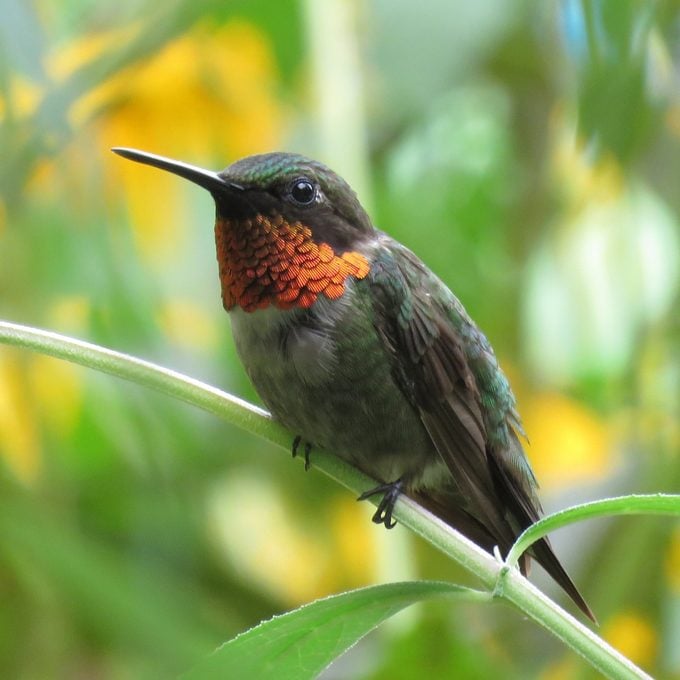
Nothing captures the imagination quite like hummingbirds. While there are more than 300 species of hummingbirds in the world, folks living in the eastern United States and Canada can usually expect just a single type. Ruby-throateds are the summer hummers in the east. The ruby-throated hummingbird range is limited to the eastern half of North America.
East/West Hummingbird Range Divide
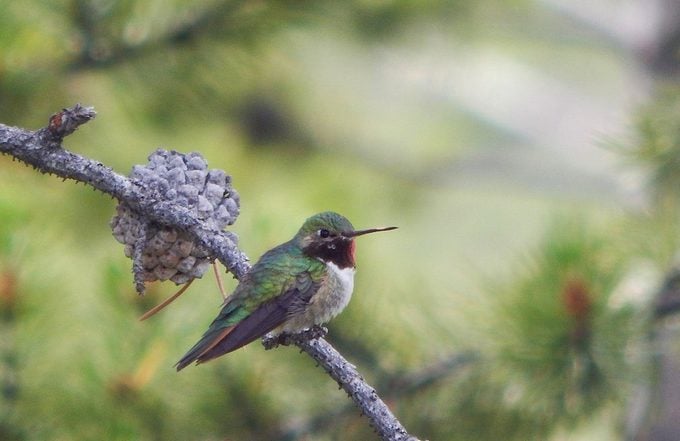
Similar to blue jays and Steller’s jays, Baltimore orioles and Bullock’s orioles, eastern and spotted towhees, and numerous other examples, ruby-throated hummingbirds have a related look-alike species in the west. The western broad-tailed hummingbirds are nearly indistinguishable from the ruby-throated species. However, broad-tailed birds have cinnamon brown hues in their tail feathers. The tails of ruby-throated hummingbirds show black and green colorations.
The ruby-throated hummingbird breeding range does not overlap with the broad-tailed range.
Learn more about western birds and their eastern counterparts.
Spring Migration Movements
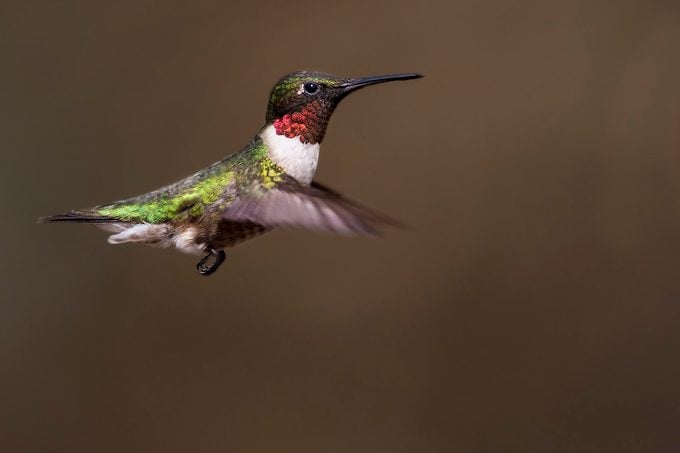
The northward migration of ruby-throated hummingbirds is a highly anticipated annual event. People track the movements of birds with nearly real-time data reporting. Hummingbird feeders are cleaned and often put out even before the first birds arrive.
The northward flights take many of the ruby-throated hummingbirds directly across the Gulf of Mexico, an incredible feat for such a small creature. By early-March the tiny fliers start showing up along the Gulf Coast from east Texas to the Florida panhandle. Mid-April has the birds near the Interstate 70 and Interstate 74 corridors.
After 2 months of gradual northern movements, the species pushes into southern Canada by mid-May. Males generally arrive to a location roughly 10 days before the females pass through.
How do hummingbirds find feeders?
Summer Breeding Season
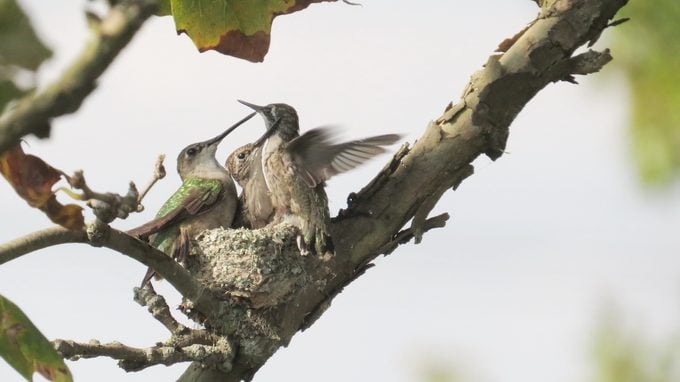
During nesting season, the ruby-throated hummingbird range extends from central Florida and east Texas, north to the southern Canada from the Maritimes to Alberta. Their breeding distribution doesn’t overlap with any other hummingbird species.
Hummingbirds build impossibly small nests. These are usually directly on top of deciduous tree branches. Spider silk gives the nests pliability to expand as nestlings grow. The exterior is often decorated with lichen or moss, likely as camouflage.
Ruby-throateds often lay a pair of pea sized eggs, although sometimes the number is one or three. Incubation lasts roughly 2 weeks. Females are solely responsible for raising the nestlings. Males abscond south shortly after the breeding season wraps up.
Don’t miss these jaw-dropping hummingbird facts.
Fall Migration Flights
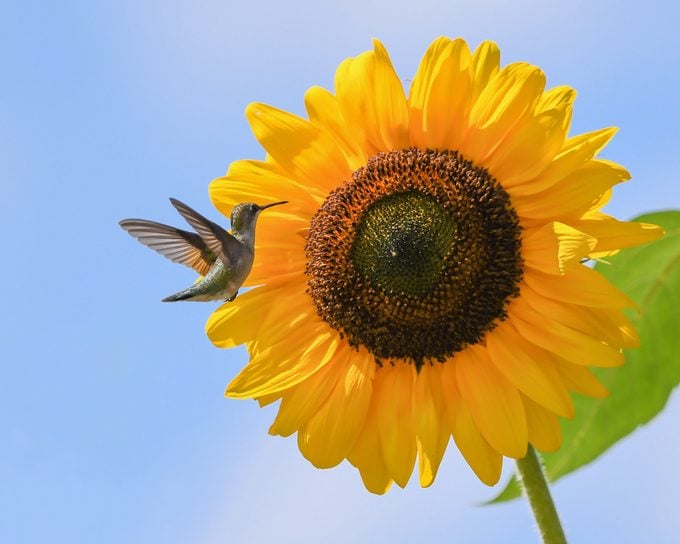
The southbound journey of ruby-throated hummingbirds begins by late summer for adult males. In the far north, individuals can start fall migration in late July. August and September is when the majority of these hummingbirds are moving south.
Hummers are diurnal migrants, flying during the daytime and resting overnight. Ruby-throateds are less likely to fly across the Gulf of Mexico in the fall. Instead, birds work west through Texas or island hop from Florida to their winter ranges.
Younger birds will remain closer to the coastline on their initial migrations, and adult birds stay farther inland. Although it was a theory at one point in history, hummingbirds are self-sufficient on their long-distance flights. They are not hitching rides on the backs of geese or swans.
Discover the truth about common hummingbird myths.
Rare Eastern Winter Visitors

Late fall and winter are the best times to potentially find a different species of hummingbird in the east. While a few ruby-throateds may overwinter along the Gulf Coast and in southern Florida, during the cold months, most of them move out of the United States. Any winter sightings of hummingbirds east of the Great Plains is worth examining closely.
Rufous hummingbirds are the most likely species to be encountered. The increased number of ornamental plantings, as well as additional feeding stations, is one theory as to why rufous hummingbirds are lingering along the east coast.
In recent years, Allen’s, black-chinned, Calliope, Anna’s, and broad-billed hummingbirds have all been documented, sometimes shockingly far north. There are often just a handful of records each winter for these stray western hummingbird species.
Sign up for our free newsletter to learn more about hummingbirds.




















